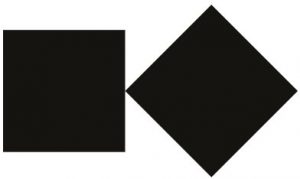How come some brands’ most successful tweets are, in many ways, completely off-brand? And what does that mean for us writers who create tone of voice guidelines for clients?
At last week’s Professional Copywriters’ Conference, I heard a talk by David Levin: a social media shaman whose company That Lot writes fantastic – often hilarious – tweets for big-name brands. He gave some tips on how to write shareable content that customers really respond to.
One thing really stood out for me: many of the star tweets – the ones that earned lots of retweets and new followers – were, arguably, off-brand in terms of the brand’s tone of voice. Yes, they were funny and clever. But, technically speaking, they shouldn’t have got past the brand guardian and their guidelines. Let me give you an example:
Argos: a sick case study
David showed us an example from Argos. It began with a tweet from the enigmatic Immy ‘Badman’ Bugti, who said:
@Argos_Online YO wen u gettin da ps4 tings in moss side? Ain’t waitin no more. Plus da asian guy whu works dere got bare attitude #wasteman
Unfazed, the Argos team replied:
@BadManMugti Safe badman, we gettin sum more PS4 tings in wivin da next week y’get me. Soz bout da attitude, probz avin a bad day yo.
And Twitter loved it: at my last count, this reply had more than 6,000 retweets and more than 3,000 favourites. Even Badman was pretty impressed, and tweeted once more to declare that Argos was ‘safe’.
Now, I love what Argos did here. But if their brand has a tone of voice document, I doubt it gives staff licence to apologise using words like ‘soz’. It’s much more likely that an individual at Argos with a sense of humour took it upon themselves to have a bit of fun – to be a bit imaginative and break the rules.
Your voice or mine?
This reminds me of another piece of communication that went viral a while back. Three-year-old Lily Robinson wrote to Sainsbury’s, confused as to why their tiger bread was so named when it patently looks more like a giraffe. Customer Manager Chris King melted our hearts when he wrote back to her, saying that renaming the product ‘giraffe bread’ was ‘a brilliant idea’, and offering her a gift voucher for some ‘sweeties’. It was a great response from him – and and a social media hit for Sainsbury’s.
But again, the interesting thing: he’s not using the Sainsbury’s tone of voice. Not even close, in fact. He’s just using his brains, and responding to the letter-writer in her own language. He’s following his own voice, not the Sainsbury’s voice. I agree with this blog – and many others – which argued that it worked because it was a less ‘managed’ response to the customer.
So what now for tone of voice?
All this it begs the question: when we create tone of voice guidelines for clients, how do we leave room for these special comms cases, where an individual’s personality creates something that stands beyond the brand? How do we help teams to write in a consistent way, without stifling the imagination and creativity that really connects with people?
Do tone of voice guidelines really work any more?
Stay tuned for another blog which asks whether tone of voice is really your problem or your priority…

